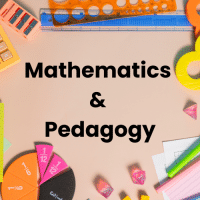CTET & State TET Exam > CTET & State TET Questions > Read statements (A) and (B) on the social con...
Start Learning for Free
Read statements (A) and (B) on the social condition of women during the 19th century, and choose the correct option.
Statement (A): Pandita Ramabai founded a widows’ home at Poona to provide shelter to widows who had been treated badly by their husbands’ relatives.
Statement (B): She felt that Hinduism was oppressive towards women.
Statement (A): Pandita Ramabai founded a widows’ home at Poona to provide shelter to widows who had been treated badly by their husbands’ relatives.
Statement (B): She felt that Hinduism was oppressive towards women.
- a)(A) is true but (B) is false.
- b)(A) is false but (B) is true.
- c)Both (A) and (B) are true; and (B) is the precursor to (A).
- d)Both (A) and (B) are true but there is no relationship between the two statements.
Correct answer is option 'C'. Can you explain this answer?
| FREE This question is part of | Download PDF Attempt this Test |
Most Upvoted Answer
Read statements (A) and (B) on the social condition of women during th...
- Pandita Ramabai, a great scholar of Sanskrit, felt that Hinduism was oppressive towards women, and wrote a book about the miserable lives of upper-caste Hindu women. Hence, statement B is true.
- She founded a widows’ home at Poona to provide shelter to widows who had been treated badly by their husbands’ relatives. Thus, statement A is true.
- Here women were trained so that they could support themselves economically.
- Pandita Ramabai herself had experienced the challenges faced by widows in India, having lost her own husband at a young age.
- She was determined to help other widows who were often treated as outcasts and denied basic human rights.
- In addition to founding the Sharada Sadan, Pandita Ramabai also established the Mukti Mission in Kedgaon, Maharashtra, which provided education and vocational training to women and children.
- She was a strong advocate for women's education and empowerment and worked tirelessly throughout her life to improve the status of women in Indian society.
Hence we conclude that the correct option is both (A) and (B) are true, and (B) is the precursor to (A).
Attention CTET & State TET Students!
To make sure you are not studying endlessly, EduRev has designed CTET & State TET study material, with Structured Courses, Videos, & Test Series. Plus get personalized analysis, doubt solving and improvement plans to achieve a great score in CTET & State TET.

|
Explore Courses for CTET & State TET exam
|

|
Read statements (A) and (B) on the social condition of women during the 19th century, and choose the correct option.Statement (A): Pandita Ramabai founded a widows’ home at Poona to provide shelter to widows who had been treated badly by their husbands’ relatives.Statement (B): She felt that Hinduism was oppressive towards women.a)(A) is true but (B) is false.b)(A) is false but (B) is true.c)Both (A) and (B) are true; and (B) is the precursor to (A).d)Both (A) and (B) are true but there is no relationship between the two statements.Correct answer is option 'C'. Can you explain this answer?
Question Description
Read statements (A) and (B) on the social condition of women during the 19th century, and choose the correct option.Statement (A): Pandita Ramabai founded a widows’ home at Poona to provide shelter to widows who had been treated badly by their husbands’ relatives.Statement (B): She felt that Hinduism was oppressive towards women.a)(A) is true but (B) is false.b)(A) is false but (B) is true.c)Both (A) and (B) are true; and (B) is the precursor to (A).d)Both (A) and (B) are true but there is no relationship between the two statements.Correct answer is option 'C'. Can you explain this answer? for CTET & State TET 2024 is part of CTET & State TET preparation. The Question and answers have been prepared according to the CTET & State TET exam syllabus. Information about Read statements (A) and (B) on the social condition of women during the 19th century, and choose the correct option.Statement (A): Pandita Ramabai founded a widows’ home at Poona to provide shelter to widows who had been treated badly by their husbands’ relatives.Statement (B): She felt that Hinduism was oppressive towards women.a)(A) is true but (B) is false.b)(A) is false but (B) is true.c)Both (A) and (B) are true; and (B) is the precursor to (A).d)Both (A) and (B) are true but there is no relationship between the two statements.Correct answer is option 'C'. Can you explain this answer? covers all topics & solutions for CTET & State TET 2024 Exam. Find important definitions, questions, meanings, examples, exercises and tests below for Read statements (A) and (B) on the social condition of women during the 19th century, and choose the correct option.Statement (A): Pandita Ramabai founded a widows’ home at Poona to provide shelter to widows who had been treated badly by their husbands’ relatives.Statement (B): She felt that Hinduism was oppressive towards women.a)(A) is true but (B) is false.b)(A) is false but (B) is true.c)Both (A) and (B) are true; and (B) is the precursor to (A).d)Both (A) and (B) are true but there is no relationship between the two statements.Correct answer is option 'C'. Can you explain this answer?.
Read statements (A) and (B) on the social condition of women during the 19th century, and choose the correct option.Statement (A): Pandita Ramabai founded a widows’ home at Poona to provide shelter to widows who had been treated badly by their husbands’ relatives.Statement (B): She felt that Hinduism was oppressive towards women.a)(A) is true but (B) is false.b)(A) is false but (B) is true.c)Both (A) and (B) are true; and (B) is the precursor to (A).d)Both (A) and (B) are true but there is no relationship between the two statements.Correct answer is option 'C'. Can you explain this answer? for CTET & State TET 2024 is part of CTET & State TET preparation. The Question and answers have been prepared according to the CTET & State TET exam syllabus. Information about Read statements (A) and (B) on the social condition of women during the 19th century, and choose the correct option.Statement (A): Pandita Ramabai founded a widows’ home at Poona to provide shelter to widows who had been treated badly by their husbands’ relatives.Statement (B): She felt that Hinduism was oppressive towards women.a)(A) is true but (B) is false.b)(A) is false but (B) is true.c)Both (A) and (B) are true; and (B) is the precursor to (A).d)Both (A) and (B) are true but there is no relationship between the two statements.Correct answer is option 'C'. Can you explain this answer? covers all topics & solutions for CTET & State TET 2024 Exam. Find important definitions, questions, meanings, examples, exercises and tests below for Read statements (A) and (B) on the social condition of women during the 19th century, and choose the correct option.Statement (A): Pandita Ramabai founded a widows’ home at Poona to provide shelter to widows who had been treated badly by their husbands’ relatives.Statement (B): She felt that Hinduism was oppressive towards women.a)(A) is true but (B) is false.b)(A) is false but (B) is true.c)Both (A) and (B) are true; and (B) is the precursor to (A).d)Both (A) and (B) are true but there is no relationship between the two statements.Correct answer is option 'C'. Can you explain this answer?.
Solutions for Read statements (A) and (B) on the social condition of women during the 19th century, and choose the correct option.Statement (A): Pandita Ramabai founded a widows’ home at Poona to provide shelter to widows who had been treated badly by their husbands’ relatives.Statement (B): She felt that Hinduism was oppressive towards women.a)(A) is true but (B) is false.b)(A) is false but (B) is true.c)Both (A) and (B) are true; and (B) is the precursor to (A).d)Both (A) and (B) are true but there is no relationship between the two statements.Correct answer is option 'C'. Can you explain this answer? in English & in Hindi are available as part of our courses for CTET & State TET.
Download more important topics, notes, lectures and mock test series for CTET & State TET Exam by signing up for free.
Here you can find the meaning of Read statements (A) and (B) on the social condition of women during the 19th century, and choose the correct option.Statement (A): Pandita Ramabai founded a widows’ home at Poona to provide shelter to widows who had been treated badly by their husbands’ relatives.Statement (B): She felt that Hinduism was oppressive towards women.a)(A) is true but (B) is false.b)(A) is false but (B) is true.c)Both (A) and (B) are true; and (B) is the precursor to (A).d)Both (A) and (B) are true but there is no relationship between the two statements.Correct answer is option 'C'. Can you explain this answer? defined & explained in the simplest way possible. Besides giving the explanation of
Read statements (A) and (B) on the social condition of women during the 19th century, and choose the correct option.Statement (A): Pandita Ramabai founded a widows’ home at Poona to provide shelter to widows who had been treated badly by their husbands’ relatives.Statement (B): She felt that Hinduism was oppressive towards women.a)(A) is true but (B) is false.b)(A) is false but (B) is true.c)Both (A) and (B) are true; and (B) is the precursor to (A).d)Both (A) and (B) are true but there is no relationship between the two statements.Correct answer is option 'C'. Can you explain this answer?, a detailed solution for Read statements (A) and (B) on the social condition of women during the 19th century, and choose the correct option.Statement (A): Pandita Ramabai founded a widows’ home at Poona to provide shelter to widows who had been treated badly by their husbands’ relatives.Statement (B): She felt that Hinduism was oppressive towards women.a)(A) is true but (B) is false.b)(A) is false but (B) is true.c)Both (A) and (B) are true; and (B) is the precursor to (A).d)Both (A) and (B) are true but there is no relationship between the two statements.Correct answer is option 'C'. Can you explain this answer? has been provided alongside types of Read statements (A) and (B) on the social condition of women during the 19th century, and choose the correct option.Statement (A): Pandita Ramabai founded a widows’ home at Poona to provide shelter to widows who had been treated badly by their husbands’ relatives.Statement (B): She felt that Hinduism was oppressive towards women.a)(A) is true but (B) is false.b)(A) is false but (B) is true.c)Both (A) and (B) are true; and (B) is the precursor to (A).d)Both (A) and (B) are true but there is no relationship between the two statements.Correct answer is option 'C'. Can you explain this answer? theory, EduRev gives you an
ample number of questions to practice Read statements (A) and (B) on the social condition of women during the 19th century, and choose the correct option.Statement (A): Pandita Ramabai founded a widows’ home at Poona to provide shelter to widows who had been treated badly by their husbands’ relatives.Statement (B): She felt that Hinduism was oppressive towards women.a)(A) is true but (B) is false.b)(A) is false but (B) is true.c)Both (A) and (B) are true; and (B) is the precursor to (A).d)Both (A) and (B) are true but there is no relationship between the two statements.Correct answer is option 'C'. Can you explain this answer? tests, examples and also practice CTET & State TET tests.

|
Explore Courses for CTET & State TET exam
|

|
Suggested Free Tests
Signup for Free!
Signup to see your scores go up within 7 days! Learn & Practice with 1000+ FREE Notes, Videos & Tests.






















